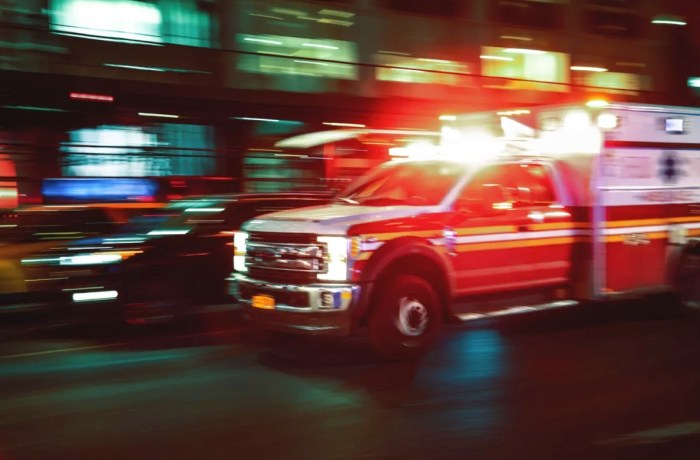By Emily Keller
Two years after it began, Esther Cohen has fulfilled her mission to make but a few of America’s workers more visible than before. In the book unseenamerica, the name of which Cohen, the book’s editor, hopes will become a trademark term that describes work with a lowercase title “because it’s not seen yet,” workers from around the country are depicted in their work, leisure, community and family lives by none other than themselves. To carry out the project, Cohen, who lives on the Upper West Side, gave each participant photography lessons and cameras and then let them choose which images they wanted published in the book. Then she made a list of hundreds of potential participants and conducted the first few classes with migrant workers from Long Island, home health aides, building workers and garment workers. Hector Austin of East Flatbush, an Associate Fraud Investigator of welfare fraud for the City, was one of the contributors. His photograph of himself and two co-workers at a rest stop off I-95 on the way to the New York Welfare Fraud Investigators Conference is published on page 11 of the book, in the Work section. The photo was taken of a restroom mirror reflecting Austin’s co-workers, who are washing their hands, and Austin, who stands between them holding the camera. Austin says he does not remember where the rest stop was. “We just had a great time through the whole trip and I guess I was able to capture one of the moments,” Austin said about the photo. “They were washing their hands and we were sharing a few jokes together… I thought I wouldn’t remember that unless I took a photo of it.” In response to a question about whether he feels appreciated for the job that ho does, Austin said, “It’s all what you make it. I’m sure that everyone in whatever they’re doing doesn’t get the proper respect,” but to focus on that brings undue stress and anger. “I just try to go with the flow. If you just go to your job to be appreciated then you’ll never find the peace,” he continued. “If you’re not happy in any situation you have options. You don’t let anyone take your sunshine away.” Photography is a break from that, Austin said, because, “You’re able to escape your own reality and go into someone else’s.” Blasé Alleyne, an Environmental Service Worker for the 1199 SEIU who lives in Flatbush, took a photo of his friend playing steel drums at a Manhattan nursing home in the book’s Work section. Wen Zun Li of Bay Ridge/ Borough Park had a photo of a garment cutting room published with the caption: “My dream is to become a good cutter.” The photo is titled “Dream.” Ping Lam of New Utrecht, who works as a cutter for Local 23-25, took a photo of a woman being baptized after winning an immigration battle to stay in the United States, and another of her son with a bathing cap and goggles standing by a pool. The caption reads: “My son is lucky because he lives in this country and has a lot of opportunities to go to a good school and to take swimming lessons. He can have a good future.” Ying Li of Dyker Heights/ Bath Beach, a garment worker for Local 23-25, had an untitled photo of a flowering backyard tree published in the book. “It was the end of winter and I was looking for spring,” the caption says. Basil Saunders, Jr. of Williamsburg, a Child Protective Specialist Supervisor for the Administration for Children’s Services took a photo of a police officer on a motorcycle in Times Square that he says echoes the glamorous 1920s. The locations of the more than 400 classes that took place over a 12-week period varied. Some of the sites included a Native American reservation, an airport lounge, union halls and churches. More than 600 nationwide exhibitions followed. The idea began when, “A volunteer in our office brought in a hundred cameras and we thought it would be an interesting idea to teach photo classes to people who don’t usually take them,” said Cohen, Executive Director of Bread and Roses Cultural Project, the non-profit cultural arm of Local 1199 of the Service Employees International Union, which will be the beneficiary of the book’s proceeds. In response to the 224-page black-and-white photography book published by Regan Books of Harper Collins Publishers, which sells for $39.95, Governor George Pataki has officially designated May 1 “unseenamerica day,” recognizing workers who are often invisible to society, according to Cohen, although she has never been invisible herself through any of the low-wage jobs she has held because she is “a flamboyant, eccentric artist,” she said. “I think we should all realize that so much of the people who do the work, we don’t see. We’re not aware that so many hands go into so many of the details of what goes into our lives. I think we take for granted so much that’s so wonderful about life and why life happens,” she said. The jobs that she says the concept refers to are all jobs. “It’s not a we/ they book. It’s an us book. There’s not an inside and outside here,” she said, comparing unseenamerica to the influential book The Family of Man by Edward Steichen that showed humanity as a family when it was released in the 1980s.































